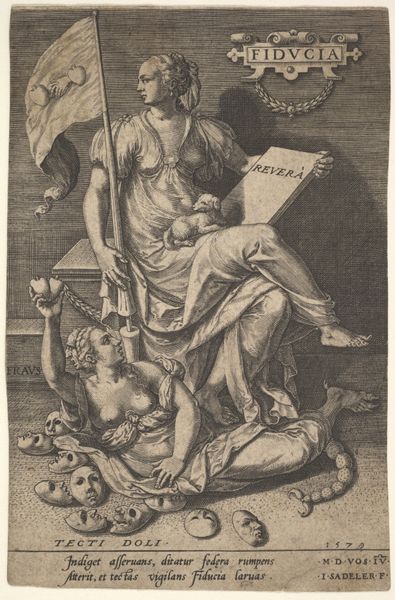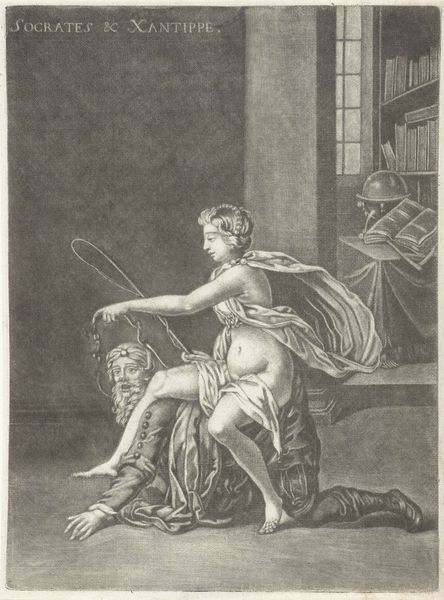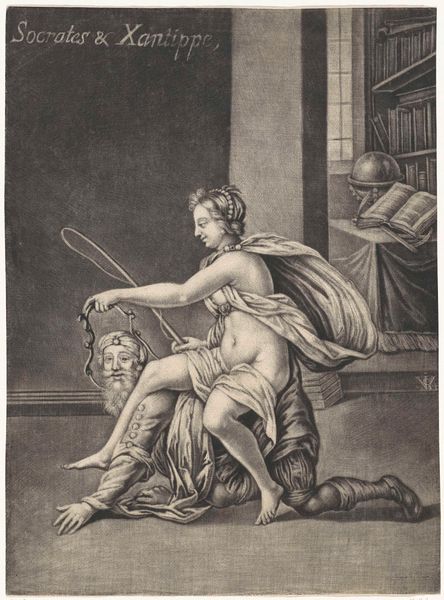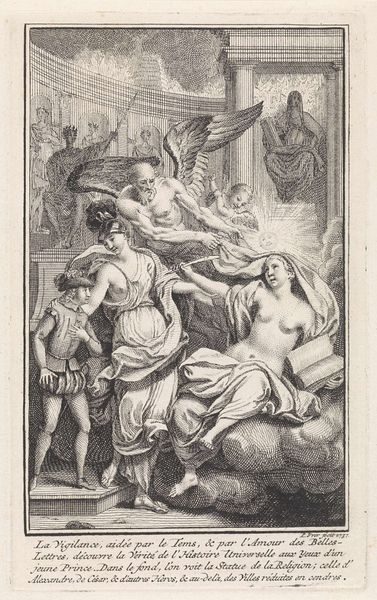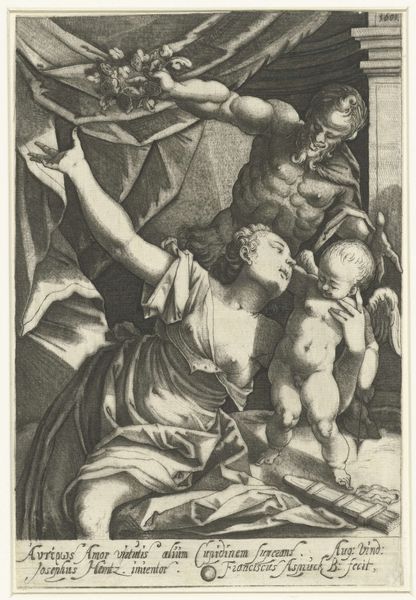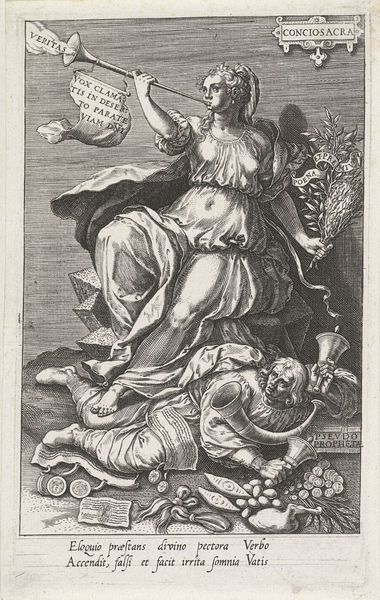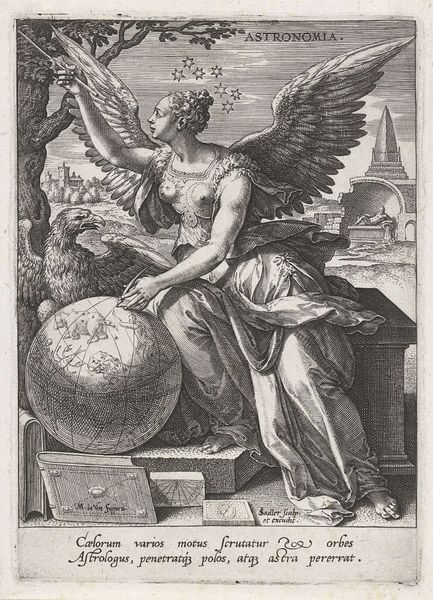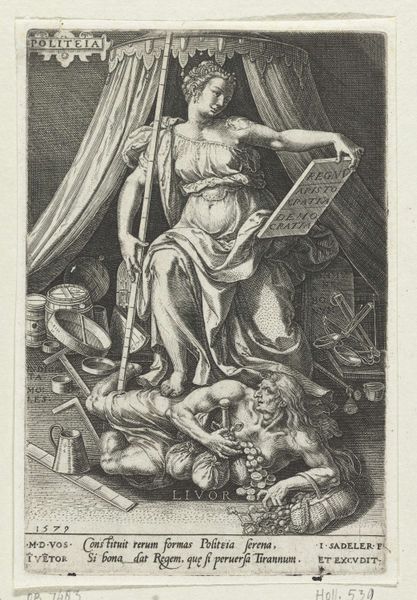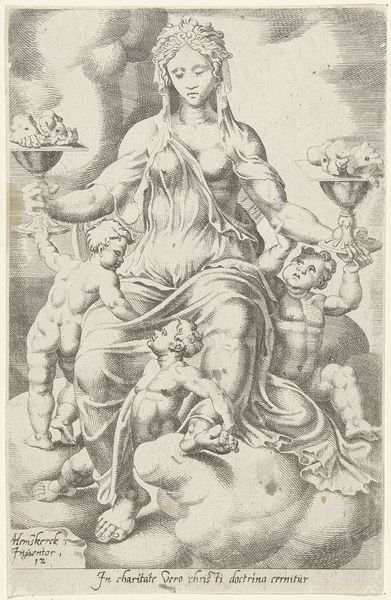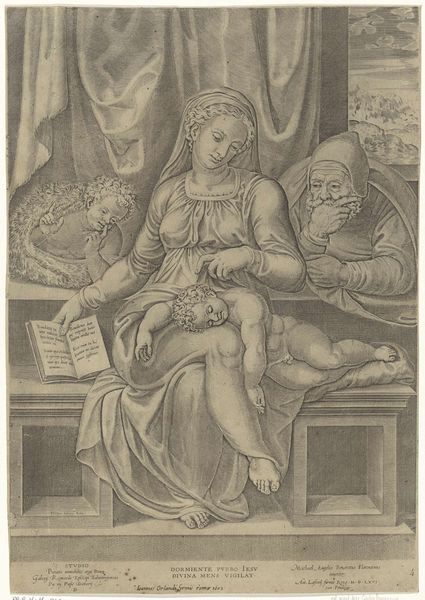
print, engraving
#
allegory
# print
#
caricature
#
mannerism
#
figuration
#
history-painting
#
engraving
Dimensions: height 142 mm, width 87 mm
Copyright: Rijks Museum: Open Domain
Curator: Look at this intriguing print, "Vertrouwen (Fiducia) overwint Heimelijk Bedrog (Tecti doli)", or "Trust (Fiducia) Conquers Secret Deceit," made in 1579 by Johann Sadeler I, housed right here at the Rijksmuseum. The intricacy of the engraving is truly remarkable. Editor: Yes, the detail is compelling! My eye is immediately drawn to the allegorical figures. There's a clear contrast intended; the upper figure embodies serenity, while the one below appears trapped in a turmoil of masks and deceit. The emotional weight of this contrast is very striking. Curator: Indeed. Sadeler has carefully constructed this piece as a moral allegory. Notice how the figure of Fiducia, or Trust, sits triumphantly above Fraus, Deceit. The symbolism of the masks scattered around Fraus represents hidden intentions and false appearances that were potent concerns during the period. Editor: Absolutely. Those masks certainly hold their own significance—evoking the slippery nature of truth and the prevalence of duplicity in society. They really speak to the anxiety of not knowing whom to trust, a universal theme, but possibly very sensitive at the time this was created. It resonates on an almost psychological level. Curator: That is correct. We can explore that through the dog next to Fiducia. Dogs have always been interpreted as symbolising faithfulness, right? She’s also holding a book with REVERA. Truth! It underlines her unwavering commitment to honesty. Think of the historical backdrop—the Reformation, the wars. Honesty was rare at that time. Editor: So this piece presents itself less as art for art’s sake, and more like an explicit commentary. What is Sadeler actually saying, here? Who commissioned it and why? Curator: Precisely. Knowing how fraught religious and political relationships were throughout Europe in the late 16th century gives this artwork even more depth. Such images often functioned as propaganda. We just need to delve more into that… Editor: Well, it's quite fascinating how those early political and social dynamics are crystallized in this elaborate composition! Thank you. Curator: Thank you. A reminder that the historical forces always leave an impression on artwork.
Comments
No comments
Be the first to comment and join the conversation on the ultimate creative platform.
